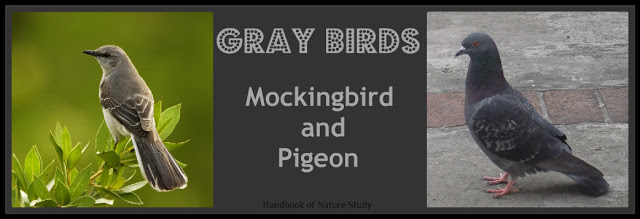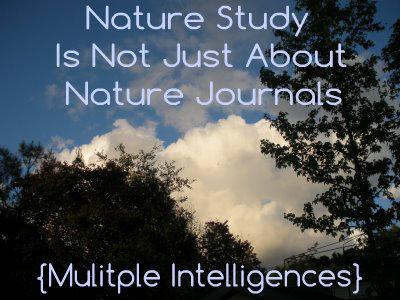The last of the bird challenges has arrived. For our family, this series of challenges has helped us become more aware of the birds around us at all times. We also have all become more adept at using our Peterson Field Guide. Every week we have spent some time quietly observing birds, admiring their various colors, shapes, and behaviors.
This week’s challenge to learn about gray birds taught us more about the pigeons we see in our neighborhood. We have a flock of pigeons that live in our town on an overcrossing and there are always pigeons hanging around at our grocery store parking lot. Someone throws out bird seed for them on the pavement and they flock there to have a meal.
My daughter Amanda has a phobia about pigeons. She avoids them at all costs. Pigeons are not my favorite bird, but I have come to appreciate them more through our reading in the Handbook of Nature Study.
“For an out-of-doors exercise during recess let the pupils observe the pigeons and tell the colors of the beak, eyes, top of the head, back, breast, wings, tail, feet, and claws. This exercise is excellent training to fit the pupils to note quickly the colors of wild birds.”
Handbook of Nature Study, page 52
No mockingbirds this week….we will keep our eyes out for this interesting bird and its songs.
We also spent some time discussing as a family how we don’t have as many birds in our yard and feeders during the summer as we do during the winter. In the winter, our list of feeder birds is really long. Yesterday we observed at our feeder to make a comparison.
House sparrow
Titmouse
Hummingbird
Western scrub jay (also in the bird bath)
Goldfinch
Comparing the lists is amazing….we must have a lot of migratory birds in our area since they must leave to go north once the winter is over. Looking at the maps in the back of the Peterson Field Guide have been very helpful in knowing just where our birds migrate to and from….so interesting.
We found this coloring page on Enchanted Learning and thought it was helpful.
Rock Dove (Pigeon)
We also found this explanation helpful from the Peterson Field Guide.
“Pigeons and Doves. Plump, fast-flying birds with small heads and low, cooing voices; they nod their heads as they walk. Two types: 1. birds with fanlike talkes (Rock Dove or Domestic Pigeon); 2. smaller, brownish birds with rounded or pointed tails (Mourning Dove).
Peterson Field Guide (W) page 208
This was a great way to end our bird study. Of course, we will always be on the look out for different birds to add to our life list in our nature journal.











































